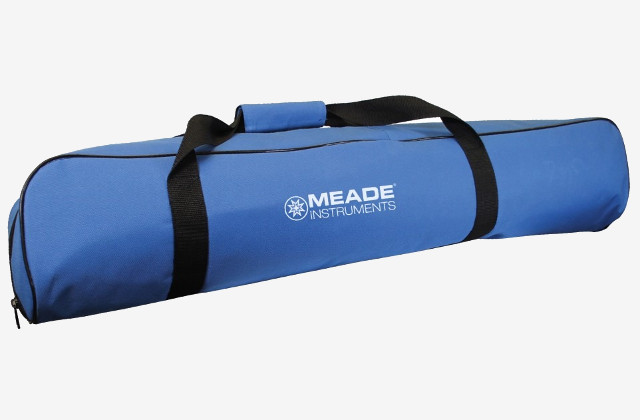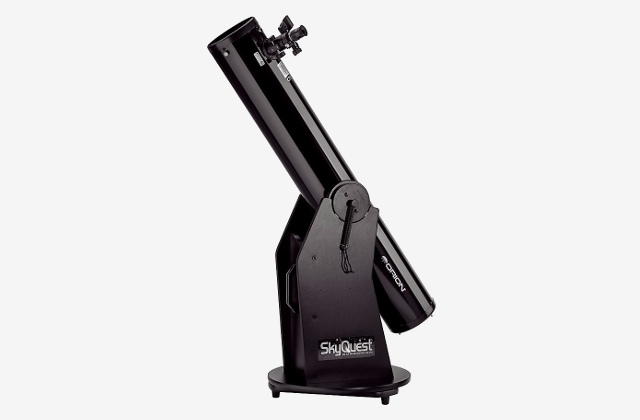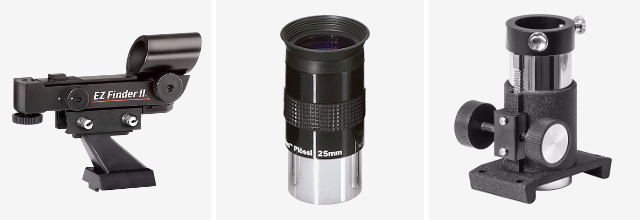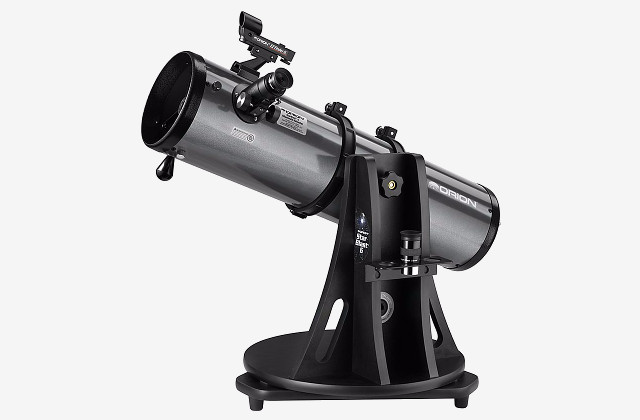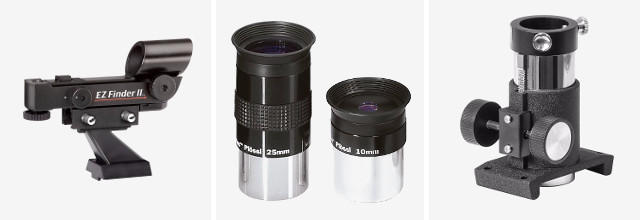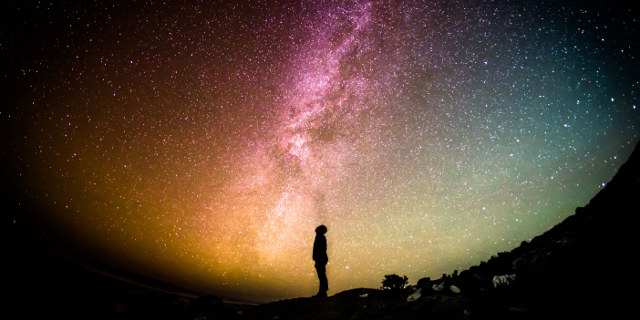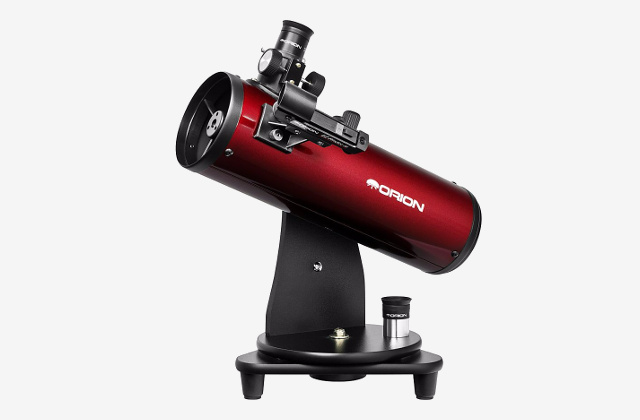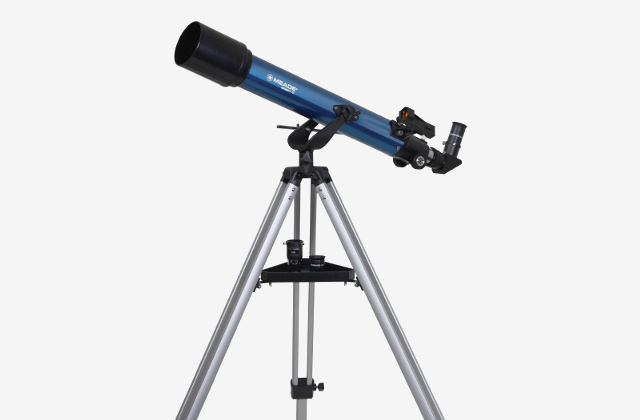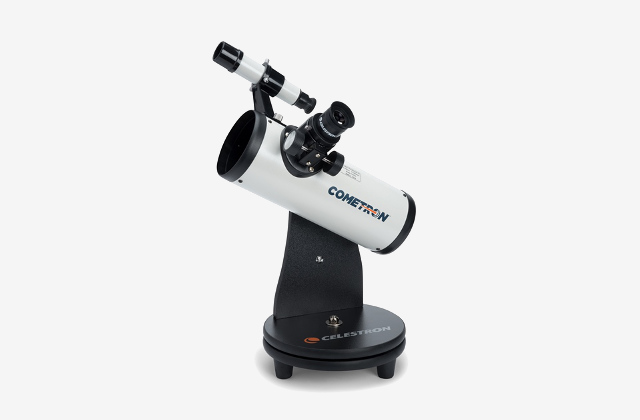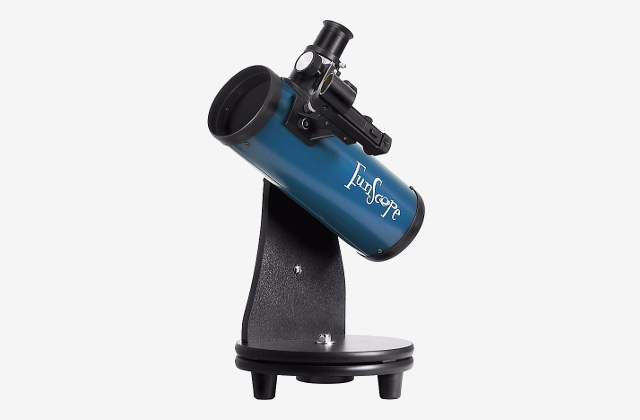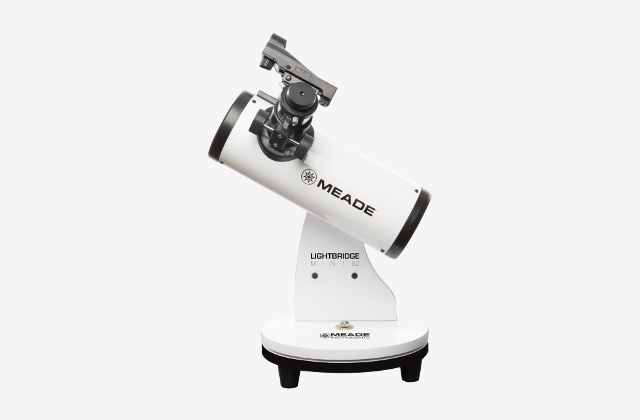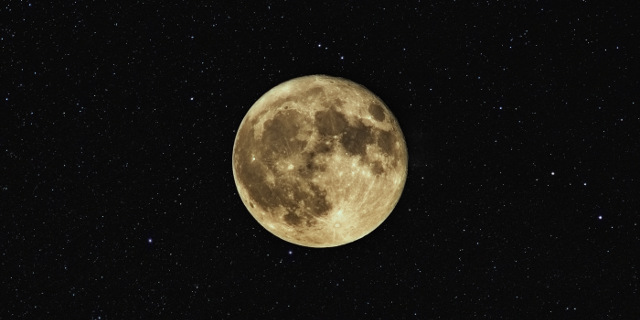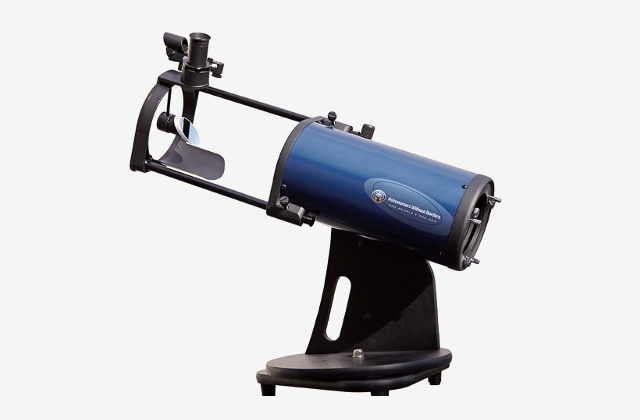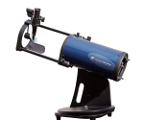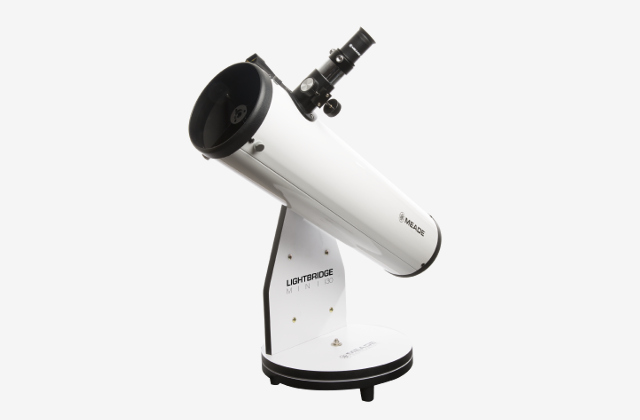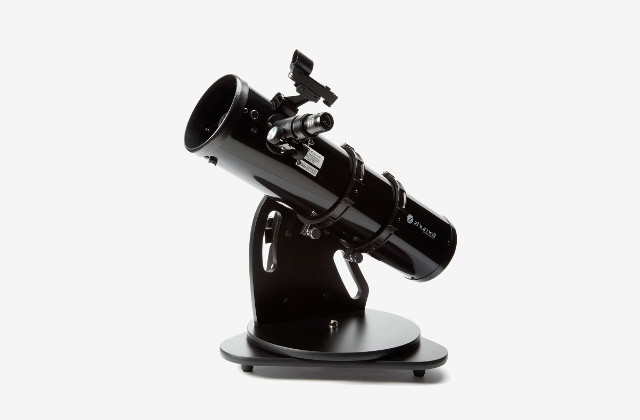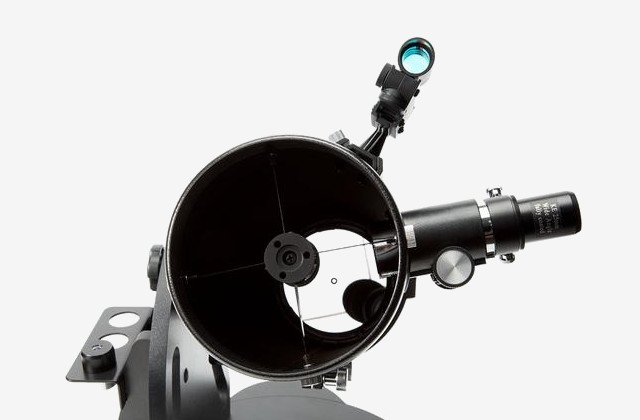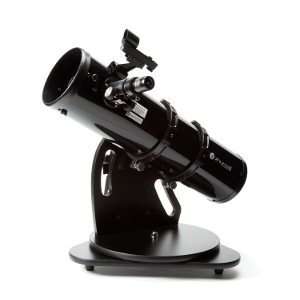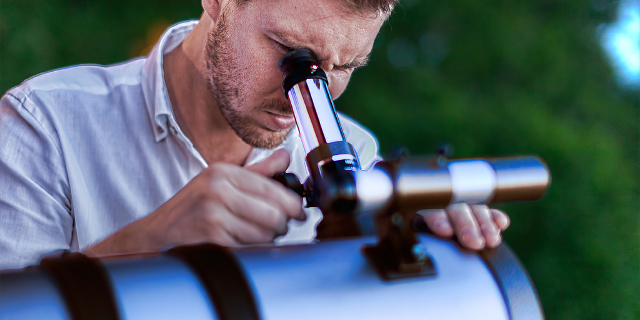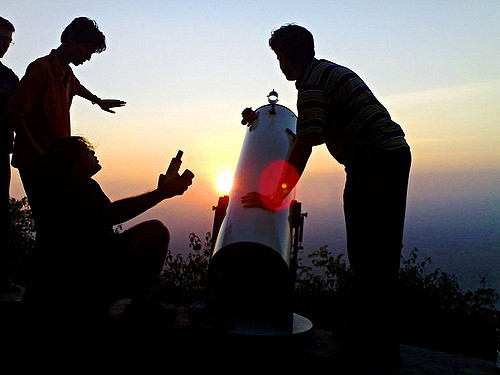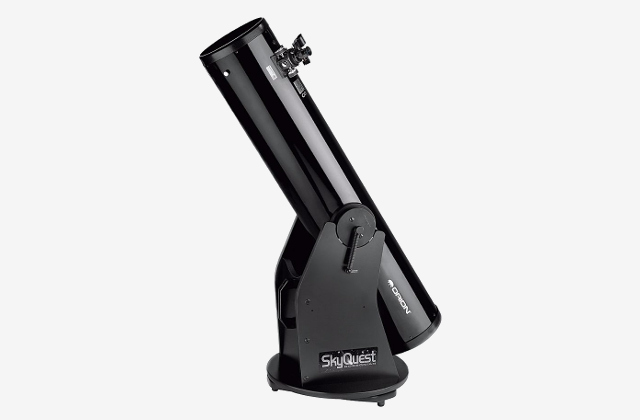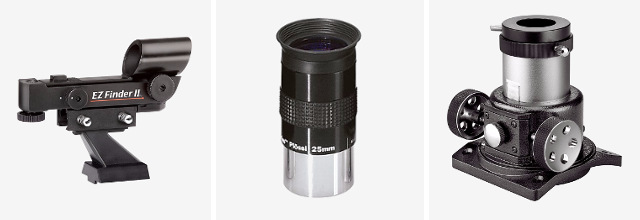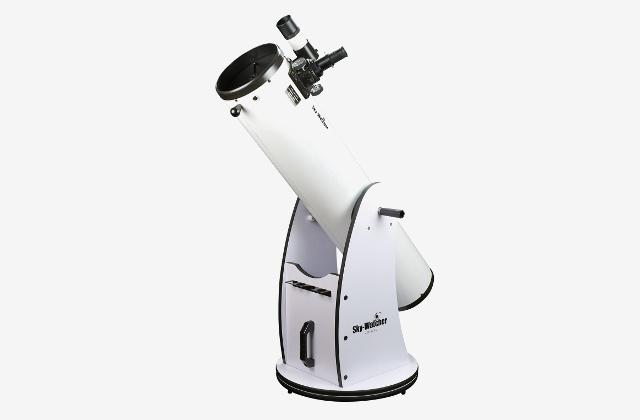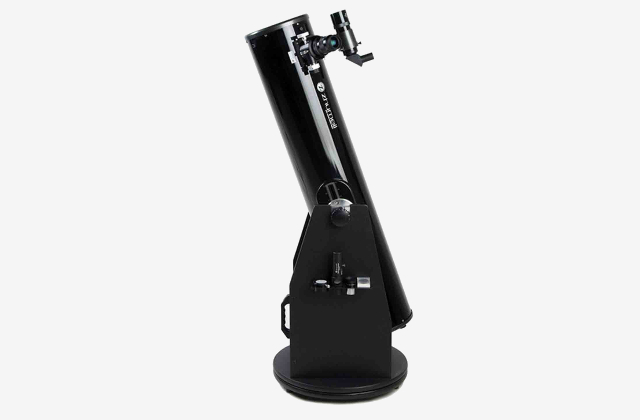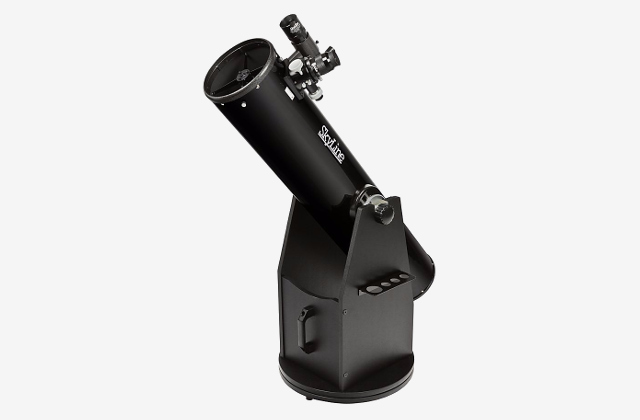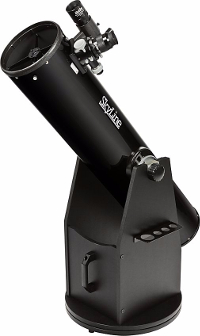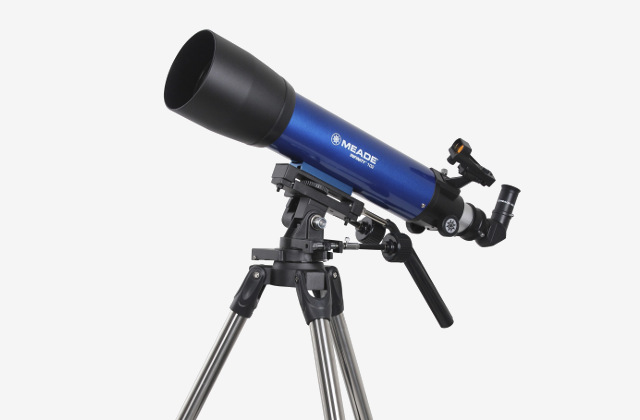
The Meade Infinity 102mm AZ Refractor Telescope is the largest aperture telescope in Meade Instruments’ Infinity line of refractors. It was slightly over budget to be included in our list of best budget telescopes for under $200. If you’re willing to spend the extra money it’s also far superior to the telescopes reviewed in our list of best telescopes for kids. With multiple eyepieces and good quality accessories, the Infinity 102 is the complete package and still offers excellent value for the price. It’s perfectly suitable for a beginner or child as their first telescope and would make a great gift.
Optics
The Infinity 102 has a 4-inch (102mm) aperture objective lens with a focal length of 600mm and a focal ratio of f/5.9. For an entry-level telescope, we were pleasantly surprised by its optical performance. It excels at low power for wide field views. A plastic dew shield fitted to the front end of the optical tube prevents condensation on the objective and blocks stray light. As this is an achromatic refractor with a fast focal ratio, chromatic aberration will be present appearing as color fringing around the edges of brighter objects like the moon. An added bonus is the ability to use the telescope for daytime terrestrial viewing.
Mount
The altazimuth tripod comes fully assembled and is constructed of cast aluminum with stainless steel tube legs. The height is adjustable from 33 to 51 inches. It is fairly sturdy and the legs are well constructed, however like any entry-level telescope on a tripod mount it is prone to vibrations. Expect to see some image wobble looking through the eyepiece when focusing, making altitude and azimuth adjustments or after bumping the telescope. The image should typically stabilize in a second or two. The vibrations are not as bad as other lower budget telescope mounts. To improve stability and reduce vibrations, try adding a 10lb weight to the accessory tray and not fully extending the tripod legs while observing from a chair.
A thumbwheel screw secures the optical tube to the mount through a slotted piece with a rubber tread. The screw can be inserted into either of the two holes in the dovetail attached to the bottom of the optical tube. An angled panhandle is used to make large up and down, and side to side movements. The slow motion control knobs are used to make fine adjustments for both axes to allow precision tracking of celestial objects. There are not many telescopes in this price range that have slow motion controls. The accessory tray can hold 3 eyepieces or 2 eyepieces and the Barlow while you’re observing. It also acts as a brace to stabilize the tripod legs.
There are a few issues with the mount when viewing objects overhead (at or near the zenith). This is fairly common with entry-level mounts and not necessarily a dealbreaker. The azimuth slow motion control makes contact with the optical tube when in the vertical position. If this bothers you or you do a lot of overhead viewing, you could try replacing the slow motion control with a longer shaft control knob. Also the panhandle may interfere with the eyepieces stored in the accessory tray. You may need to play around with the leg height to gain enough clearance.
Finder
The finder is a battery-powered red dot reflex sight that provides no magnification. It has a large viewing window and an adjustable brightness knob. The red dot is used as a guide to position the telescope in the direction of a target celestial object so that it is accurately centered in the telescope eyepiece. Don’t forget to turn off the red dot finder when you’re done or you will find the battery dead next time you want to use it. The finder mount is cast into the focuser and can accept a finderscope if you wish to use one instead.
Eyepieces
The Infinity 102 comes with three decent quality, fully-coated 1.25″ Modified Achromat eyepieces and a 2x Barlow lens. The eyepieces include a 26mm (23x magnification), a 9mm (67x magnification) and a 6.3mm (95x magnification). The 2x Barlow doubles the magnification of each eyepiece to 46x, 133x and 190x respectively. In all you get 6 different powers covering a wide range from low to high magnification which is always nice for beginners. There should be no immediate need to purchase an additional eyepiece.
Star Diagonal
The 90 Degree Erect-Prism Diagonal is an Amici prism design and corrects the image seen in the eyepiece both horizontally and vertically. This makes using star charts much easier as the image on the chart will match the image in the eyepiece. It also means that you will see a correctly oriented image when using the telescope for terrestrial viewing. The 90 degree diagonal also provides a more comfortable viewing angle especially when the telescope is pointed towards the zenith.
Focuser
The rack and pinion focuser is made from metal and well-built for an entry-level telescope. The focuser performs well with smooth focusing. Although described as a 1.25″ focuser, it appears to be a 2″ focuser with a removable 1.25″ adapter. The focuser is capable of fitting a 2″ diagonal which would allow the use of 2″ eyepieces. However, it’s uncertain how the focuser will hold up over time under the extra weight of 2″ eyepieces. Heavier eyepieces could also affect the balance of the optical tube.
Views
What can you expect to see with the Infinity 102? It offers good views of the moon and planets as well as double stars. Expect to see the craters of the moon in good detail, Jupiter’s cloud bands and its 4 moons, the rings of Saturn and its largest moon, Mars as a red disk, the changing phases of Mercury and Venus, tiny Neptune and Uranus will also be visible and you may see some coloring. It’s not ideal for viewing deep-sky objects but under dark skies and optimal conditions, brighter DSOs will be visible including galaxies, nebulae, and globular and open star clusters.
Carrying Bag
Meade sells a padded carrying bag for the Infinity 102 that can hold the optical tube and tripod mount. It also has a drawstring pouch to store the accessories. The bag can be carried using the hand strap or shoulder strap. While not necessary, the carry bag makes transporting the telescope much easier and gives you peace of mind knowing that the optics will be protected during storage or when taking it in and out of your vehicle. It’s still a very portable telescope even without the bag. The combined weight of the optical tube and mount is just over 12lbs.
Pros and Cons
- Excellent package for beginners
- Includes 3 eyepieces
- Correct image prism diagonal
- 2x Barlow lens
- Accessory tray
- Chromatic aberration
- Mount prone to vibrations
- Mount interferes with optical tube when viewing overhead
